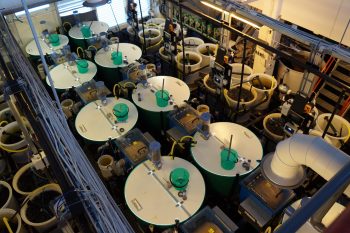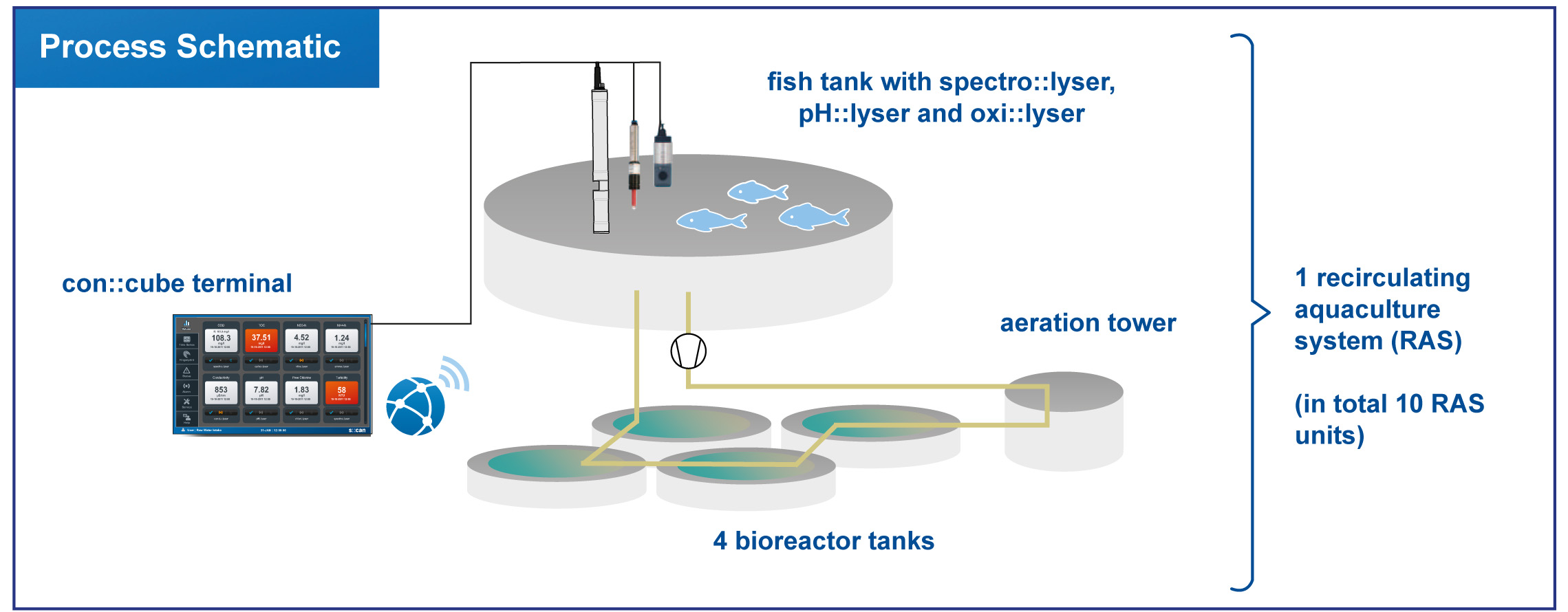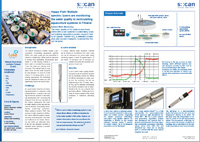The water quality of fish tanks is monitored online with s::can systems in a laboratory scale recirculating aquaculture system research facility at Laukaa. Harmful nitrite (NO2) or nitrate (NO3) levels are detected immediately and countermeasures, to protect the fish, can be taken.
Happy Fish! Multiple sensors measure nitrate and nitrite in recirculating aquaculture systems in Finland

Background
Background – Recirculation safes water
The Natural Resources Institute Finland (Luke) researches recirculating aquaculture systems (RAS), their water quality and the possibilities to improve it. Additionally, it offers tools for industries to improve their profitability. Recirculating aquaculture is a fish farming method in which water is circulated by pumping it from fish tanks into cleaning units and back. The method helps to save water since the new water accounts for only between 1% and 2% of the volume of circulating water. In recirculating aquaculture, the technology used for cleaning the water can also significantly reduce the nutrient load.
Challenge – Measurement of nitrite and nitrate
An experimental research and learning environment is in operation at the Laukaa fish farm. It assists in the trialing of technical solutions in fish farming development and examining the biological limits that are important to fish culture. Instruments that monitor water quality on-line may also be used to develop recirculating feeds, thereby modernizing production. Water quality is crucial in RAS. A key process in water cleaning is nitrification, where different bacteria convert ammonia, excreted by fish, into nitrite and furthermore into nitrate. Ammonia and nitrite are extremely toxic to the fish and detection of nitrite is important when wanting to prevent most harmful effects.
s::can’s solution
In Laukaa, different water treatment methods can be studied in 10 individual RAS units. Every unit has its individual s::can online water quality monitoring system. In total 10 spectro::lysers, 10 con::cubes, 10 oxi::lysers and 10 ph:lysers are installed and allow the accurate comparison of each unit.
Benefits – Immediate alarms
s::can’s online water quality monitoring systems are an excellent research tool to constantly monitor the effects of different treatments on water quality and the conditions the fish are experiencing in the 10 tanks. Harmful NO2 can be detected immediately and countermeasures can be taken, therefore the fish are protected from pernicious effects. Additionally, it provides an instant outlook of the results compared to traditional laboratory tools.

